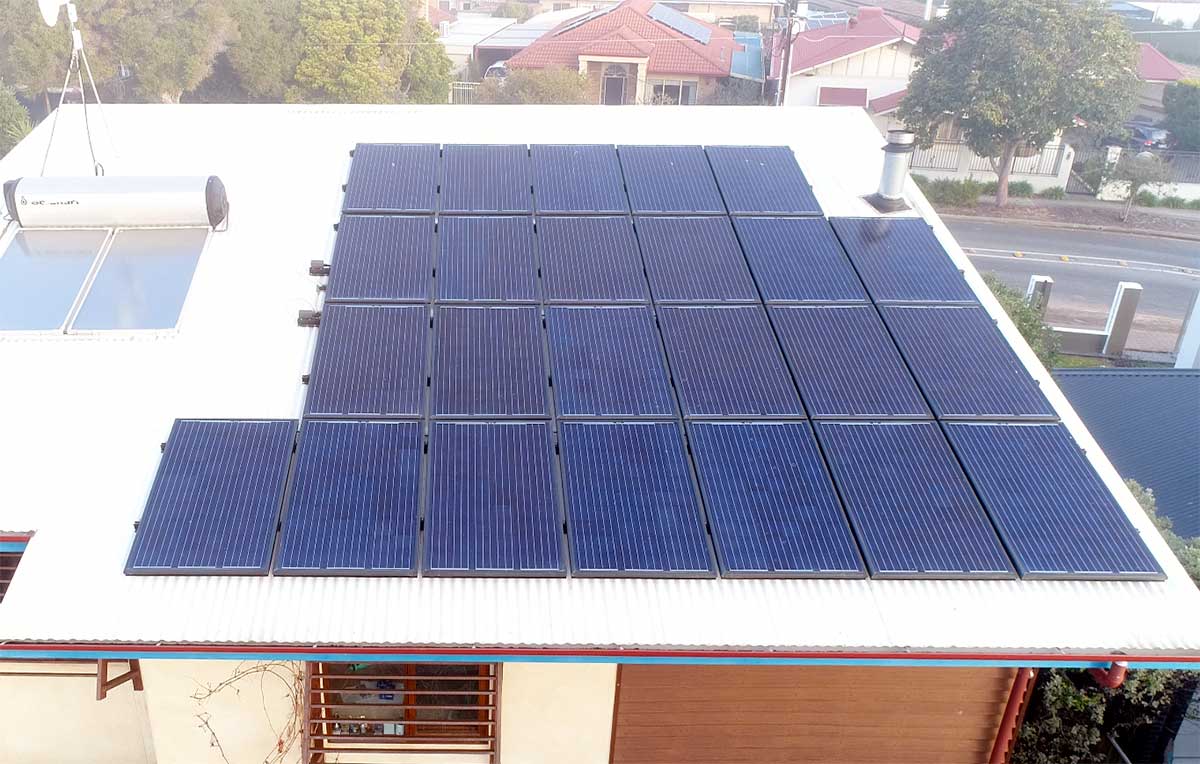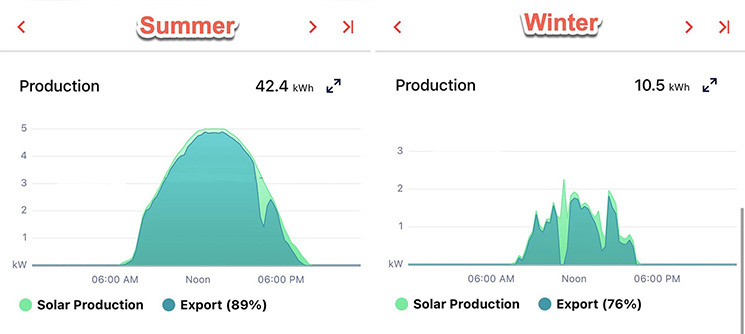Don’t Make These Mistakes When Buying An EV Charger
By Finn Peacock – Chartered Electrical Engineer, Ex-CSIRO, Electric Car Owner & Founder of SolarQuotes.com.au
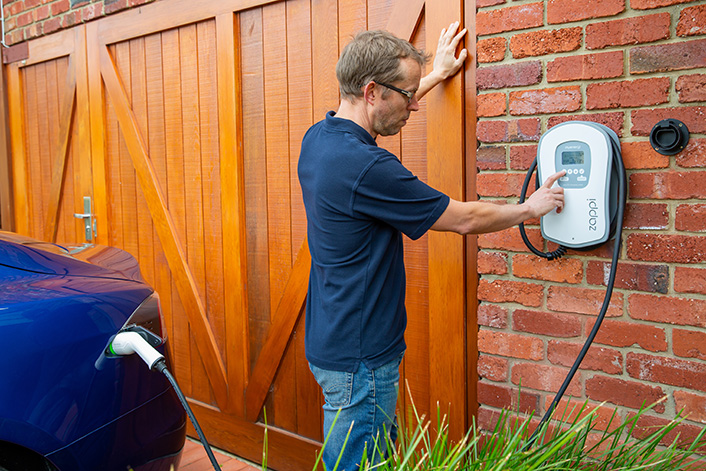
Me and my EV charger (it failed catastrophically 3 times in 2 years)
So you’ve just bought, or plan to buy, a shiny new electric car (AKA Electric Vehicle, or EV).
Great choice. But how will you charge it?
If you are like most new EV owners, you’ll also be considering a dedicated, hard-wired charger for your home.
And I’m guessing you’ll soon get overwhelmed by all the charger brands out there. You may also be daunted at the thought of finding an electrician with the experience to install and support the charger you choose.
Put it this way – I’m a Chartered Electrical Engineer that has designed control systems for nuclear power stations – and I made a dog’s breakfast of choosing an EV charger for my two electric cars!
But the good news is: I’ve made all the mistakes, so now you don’t have to.
I was initially gonna call this post ‘7 mistakes Australians make when buying EV chargers’, but as I went through my list of shame – I ended up with 12 mistakes.
Don’t make the 12 mistakes I made when you buy your EV charger.
Mistake #1 – Thinking you will happily get by with the trickle charger that comes with your car.
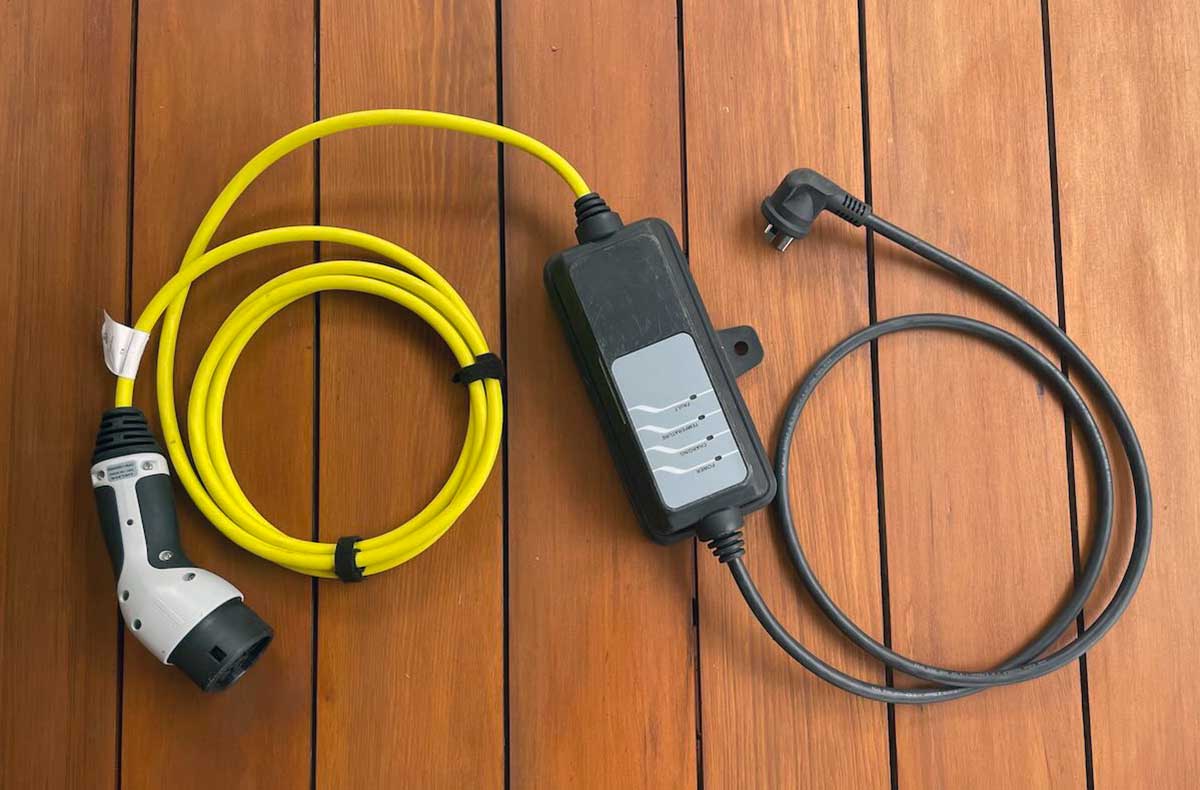
A typical mobile trickle charger that comes with most electric car models.
I’m nervous about putting this as Mistake #1.
I just know I’m gonna get roasted by lots of early adopter electric car owners who will happily tell me how they’ve been happily trickle charging their car for the past 5 years.
They’ll tell me that a dedicated, fast charger is a waste of money when all you need is patience, forward planning, and a trickle charger plugged into a regular socket.
A charger that will recharge a modern, long-range electric car in…
…40 hours!
Well, I’m guessing you are not an early adopter that is happy to put up with such painfully slow charging.
You want a charger that can at least refill a long-range EV overnight. That means you can arrive home with a low charge and sleep safe, knowing that you’ll have a full battery when you wake.
And if you are a solar owner, I’ll bet you want a fast enough charger to take your surplus solar and push it into the car battery. Because energy from Australian rooftop solar is the cheapest energy in the world, and you want a charger that can take advantage of that.
Having said all that – there are some people that can get by with the trickle charger that came with their vehicle:
- Electric motorbike owners,
- Plug-in hybrid (PHEV) owners – with a petrol engine and a tiny battery
- Owners of small, low-range electric cars with small batteries
- EV advocates who have enough time, patience and planning prowess to get by with such slow home charging
If you are not on that list, don’t compromise your big investment in a state of the art EV by skimping on your home charging. Invest in a hard-wired home charger.
I spent a couple of months with only a mobile charger, and it was a pain in the bum. Don’t be like me; enjoy your new car to its full potential.
Mistake #2 – Spending big bucks on a smart charger when you don’t need the smarts.
So you’ve decided to invest in a home charger. There are dozens of models, from dumb to super smart. The smarter the EV charger, the more it costs. Be careful of spending big bucks on features that sound great in theory but you won’t use in practice.
Just one example: smart solar charging.
I made this mistake. I bought an EV charger with ‘smart solar charging’ back when I only had 6 kW of solar and a home battery. I liked the idea of plugging my car in and knowing it would only charge from surplus solar power.
Unfortunately, by the time my solar has powered my home appliances and charged my home battery, very few kWh of solar energy are left for the car. On a good day, the solar would add 30 km of range – on a bad day – i.e. overcast or winter – I’d get close to zero km added. That was frustrating for me. When I plugged in, I just wanted it to charge a decent rate. And it was even more frustrating for my long-suffering wife, who is not a solar nerd.
I also recently changed to an electricity tariff that gives me really cheap electricity between 10 am and 3 pm.
Now, I have 20 kW of solar and bypass the solar smarts and simply ensure that my car charges as fast as possible between 10 am and 3 pm. If there is spare solar, that’s great – but when the car tops up from the grid – it’s no big deal – as it’s cheap electricity anyway (over 10x cheaper than driving on petrol).
I simply never use the solar smarts I paid for.
Don’t get me wrong – if you have a large solar system, plenty of excess solar through the year, a vehicle with a small battery, or do very little driving, a solar smart charger might work well for you. But in my experience, most people transitioning from petrol cars just want their car to charge as fast as possible from cheap electricity when they plug in.
Mistake #3 – Buying a smart charger with the wrong smarts
I bought my charger primarily for its solar smart charging feature. I’ve now realised that, personally, I don’t need solar smart charging, but I do need another feature.
I want a nerdy thing called OCPP compatibility. Which my charger does not have.
OCPP simply means the charger is compatible with other OCPP products. That means – if you need smart features in the future – a third party can easily add them.
That third party could be an electricity retailer that can use it to temporarily stop charging your car when there are electricity price spikes, or even start charging when there is too much electricity on the grid – paying you to charge your car.
That third party could be an app that automatically schedules your charging to make the most of cheaper daytime or nighttime tariffs.
The reason I want OCPP is so that my home battery can talk to my charger. I’m sick of the car draining the home battery for reasons I go into in mistake #11.
I also wish I had an OCPP compatible charger because it makes it as future-proof as possible.
Mistake #4 – Buying a car-branded charger when you’ll need to charge other car brands in the future.
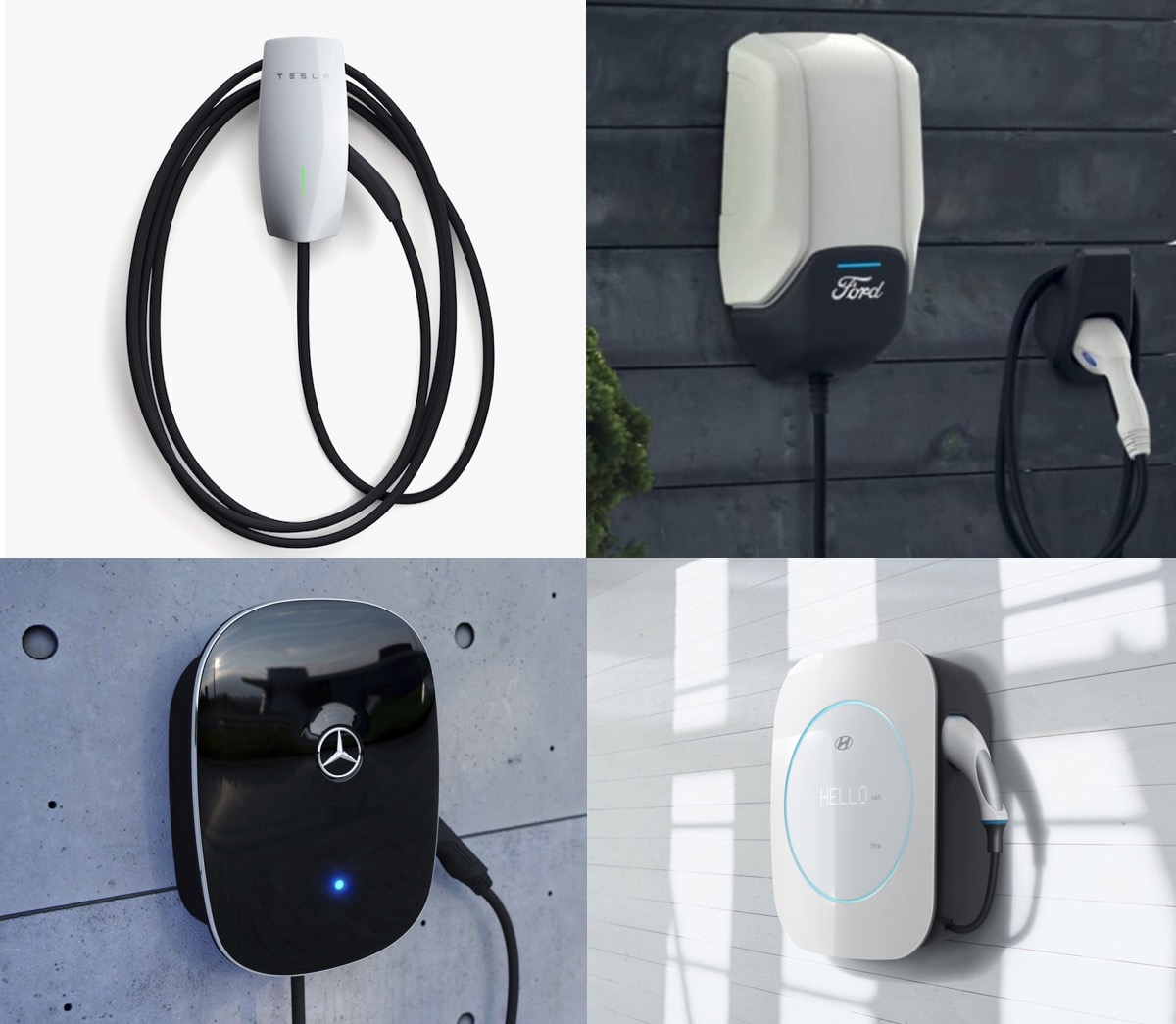
Home chargers from Tesla, Ford, Mercedes & Hyundai.
I have an $800 Tesla charger sitting in the garden shed. I got it when I bought my Tesla. But I didn’t pay to get it installed.
I installed a third-party charger instead. I wanted to be confident that my home charger would charge non-Tesla cars. My wife had an electric Mini on order, and there was no guarantee the Tesla charger would work with it.
Many first-party car branded chargers (like Tesla’s) can charge other EVs.
However, there’s no guarantee they’ll always play nice with other brands, as the car manufacturers have no incentive to update their charger software to handle other car brands.
Can you imagine trying to get Tesla tech support to tell you why your electric Mini won’t charge? (In fact, the brand of charger I bought had an issue charging Minis – and the independent charger manufacturer was happy to investigate and fix)
For this reason, I think you should play it safe and buy a third-party EV charger to avoid locking yourself into specific car brands.
Mistake #5 Not Checking Cable Length Before You Buy
I didn’t think about charger cable length when I bought my charger. Unfortunately, that meant the cable I got was one metre too short to charge my car if it was parked behind my wife’s.
That wasn’t the end of the world – but it was a pain in the bum moving cars around just to get a charge.
I’ve since got a new charger with a longer cable that works well for us:

No problems charging two EVs in a long driveway thanks to my extra-long cable!
If the charger you want to buy does not come with a long enough cable, ask if there is an ‘untethered’ version. Most chargers have an untethered version, where you can BYO cable. Then you can jump online and buy a ‘Type 2 to Type 2’ charging cable long enough for your driveway.
Mistake #6 – Not thinking ahead when buying a charger
If you’re a two (or more) car household – it’s likely they’ll all be fully electric by the end of the decade. If you need to charge more than one car overnight, you’ll either need 2 chargers, or you’ll have to jump out of bed at midnight to swap the charging cable to the other car.
Your house supply may or may not be able to handle two chargers running simultaneously, so you may need a charger that can ‘load balance’ with another charger. Also, when your installer is quoting for running the cables for the first charger, consider running cables for a future charger at the same time to save money in the long term.
All these things are pretty technical, but they are worth discussing with a savvy installer who can ensure you are ready for more than one EV in the future.
Mistake #7 – Buying a charger that can’t handle the Aussie climate
Many EV chargers come from Europe – like mine, and may not be designed with Australian conditions in mind.
In my experience, my Zappi charger (made in the UK) turned yellow from sun exposure, even though it’s mounted on a shaded, south-facing wall. It also failed 3 times – and I suspect two of those failures were due to the Adelaide heat.
Update: The Zappi manufacturer claims two of the failures were due to ‘power surges’ in my home. No other devices failed when the Zappis failed.

After approx 1 year on a south-facing wall in Adelaide this is what my charger faceplate looked like. Compare it to the new one.
Ultimately, as EV chargers are a new and evolving market, it’s hard to predict which chargers will go the distance. Make sure to check online reviews written by other Australians to see if there are any common threads about reliability in our Aussie climate.
Mistake #8 – Sourcing a charger yourself and getting it installed by a local electrician.
This is a warranty nightmare waiting to happen.
I’ve had to claim warranty on my Zappi charger three times. Each time, the Aussie website I bought it from flicked me over to the UK-based manufacturer. I managed to get replacements under warranty from them (2 chargers and one cable), but they just posted the hardware to me and made no effort to arrange the installation or cover its cost as per my rights under Australian Consumer Law.
Luckily I have about 400 friends who are solar electricians. But I’m a bit unusual like that. Most people would have to pay for the re-installation and then argue their case for compensation from the retailer or manufacturer.
I should have bought the charger from the same company that did the installation. Under Australian Consumer Law, the company that takes your money for supply-and-install is ultimately responsible for all the warranties. So I could have just gone back to the installer when my charger failed, and they would have had to arrange a replacement and install it – saving me a whole load of hassle.
Buying the hardware from the same company that does the installation also means the manufacturer can’t blame the installer or vice versa, with you stuck in the middle. You just get it fixed. Also, that means that a local installer will only supply and install hardware that they are comfortable will easily outlast its warranty.
Mistake #9 – Not enough solar.
Ten years ago, I was proud of my 6 kW system with 250 W panels. It almost filled my large, north-facing roof next to my solar hot water.
Today 6kW is considered small, and panels are typically 415W each.
When I got two electric cars; horror of horrors, I had to pay a few hundred dollars a quarter for electricity after a decade of credits!
I solved this problem by adding another 14 kW of solar to my roof, bringing me to a whopping 20 kW in total.
If you are buying solar today – or upgrading a smaller system – please size it appropriately.
Buying an electric car will significantly increase your electricity use. A typical Aussie home uses 20 kWh per day. An electric car typically has a 60 kWh battery.
Solar can offset most (or all) of the energy needed to charge your car—but only if your system is big enough.
The minimum system size I recommend elsewhere on this site is 6.6 kW, but I always advise that you should go as large as you can reasonably fit and afford. Extra kilowatts are surprisingly affordable due to how the ‘solar rebate’ works.
But if you have an electric car, look to at least 13 kW if possible.
This page goes through the state-based network rules around maximum system sizes allowed.
Keep in mind that your solar system, for a variety of reasons, will rarely produce its rated output, especially in winter.
Compare the output of a 6.6 kW system in the depths of winter compared to the height of summer:
Mistake #10 – Not being on a “Time of use” electricity tariff
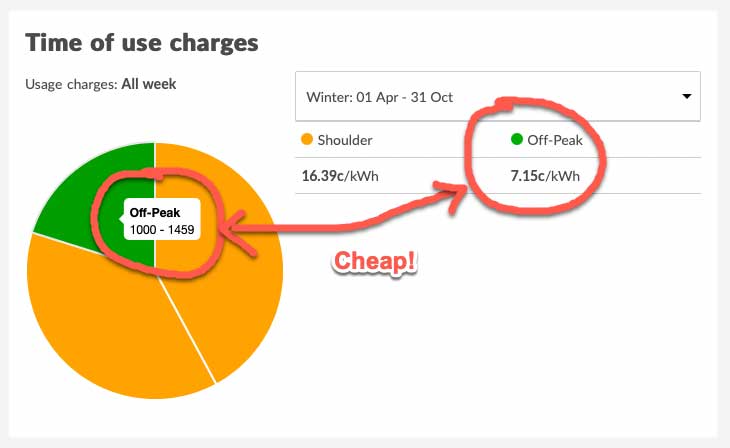
ReAmped Time of Use Plus solar sponge tariff in SA
Time of use (ToU) electricity tariffs charge you different rates for electricity, depending on the time of day you’re using it.
They make charging an electric vehicle significantly cheaper, as the off-peak rate overnight and/or in the middle of the day is typically at least half of the daytime rate of a standard ‘flat’ electricity tariff (and can be even lower).
Most EV apps can ‘schedule’ charging at certain times, but in my experience, the settings are confusing and often incomplete. For example:
- Teslas lets you schedule a ‘charging on’ time but not a ‘charging off’ time. God knows why.
- BMWs/Minis let you schedule a charging on and off time – but won’t let you use them without a ‘scheduled departure time’.
It seems to me the cars have not been programmed to work well with Australian-style tariffs.
If you don’t want to rely on your car to control the off-peak charging, look for a charger with off-peak functionality instead, or look for a charger with OCPP compatibility and a separate app to control the charger via OCPP (such as ChargeHQ).
But whatever you do – don’t predominantly charge your car from full-price grid electricity – although it will still be cheaper than petrol – you are almost certainly paying more than you need to.
Mistake #11 – Draining a home battery to fill up your car battery
If you have a home battery and an EV, you’ll need to make sure you understand and plan for how they’re going to interact.
One thing you probably want to avoid is charging your EV with your home battery. This is a bad idea for a few reasons:
- The efficiency losses between solar > battery > EV means you’ll lose energy transferring between them
- Your home battery energy will usually be more valuable avoiding peak tariff periods or participating in a VPP than charging your car.
- The more often you drain your home battery, the quicker it will degrade.
But how can you control this?
The answer gets technical very quickly – and is best left for your installer to solve. Just remember, if you don’t want your home battery to discharge every time you charge your car (without enough solar generation to cover all the 7 kW+ of charger power), then get this in writing in the quote.
I bought a charger that claimed to work with my Tesla Powerwall battery. I could not get it to play nice with the battery.
Update: The charger manufacturer claims it is possible with one of their ‘accredited installers’.
Mistake #12 – Installing a single-phase charger on a 3-phase supply.
A standard single-phase charger will work just fine on a home with a 3 phase supply.
But, I’d argue that most 3-phase homes should take advantage of the fact and install a 3-phase charger.
It’s nice to have a 3-phase charger if you need the speed. And if you want to charge slower, all 3-phase chargers can be throttled down.
If you are going to the expense of running cable and mounting an EV charger, it’s probably worth going 3-phase if you have the capacity.
The next step
So there you have it – the 12 mistakes you should avoid when buying an EV charger, based on my experience owning two electric cars for many years.
If you’ve recently bought, or plan to buy, an EV, I have a network of pre-vetted installers who can provide a quote for the supply & installation of a charger. These installers can also provide quotes for solar (whether a new system or upgrading an old one) and batteries.
Simply hit the button below to be taken to my quote form:
Happy electric driving,
Finn Peacock, founder of SolarQuotes.com.au
